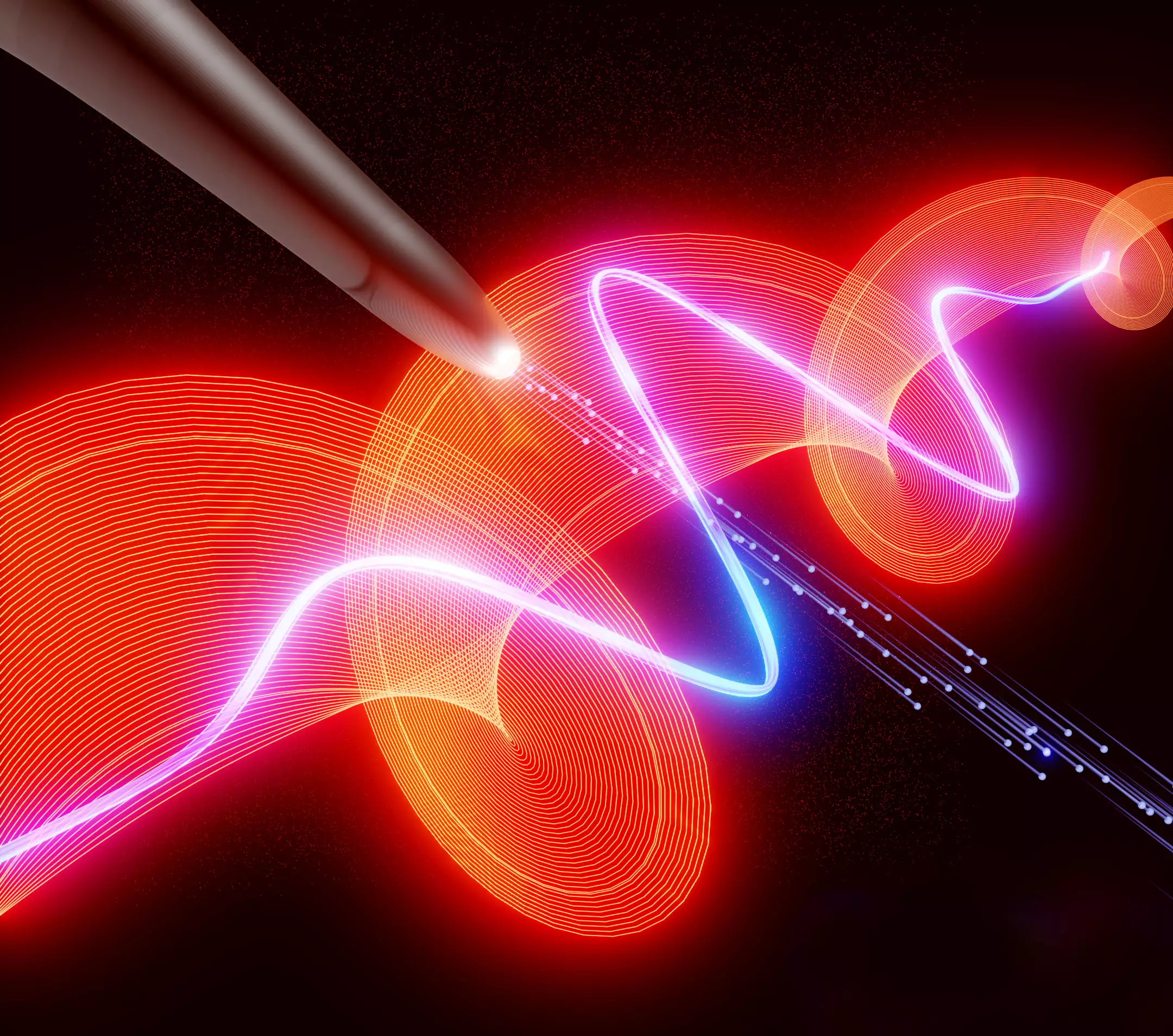A HELICAL LIGHT FIELD CAPTURED WITH THE NANOTIPTOE TECHNOLOGY ON THE TINIEST TEMPORAL AND LENGTH SCALES
Scientists from the Max Planck Institute of Quantum Optics, Ludwig Maximilian University of Munich, and Stanford University have successfully recorded a helical light field on the shortest time and length scales using their newly devised "nanoTIPTOE" method.
Since the turn of the 20th century, scientists have understood that light is an electromagnetic wave whose frequency determines its hue. Light oscillates at a rate of about one quadrillion times per second, making it impossible to directly quantify the temporal evolution of its field until the first decade of the twenty-first century. Since then, a growing number of light's mysteries have come to light.
A new method, the so-called "nanoTIPTOE" technique, has been developed by physicists from the Ultrafast Electronics and Nanophotonics group led by Dr. Boris Bergues and Prof. Matthias Kling from the attoworld team at the Ludwig-Maximilians-Universitat (LMU) and the Max Planck Institute for Quantum Optics (MPQ), allowing for the measurement of the electrical field of ultrashort laser pulses in both time and space. As a result, it is now possible to capture light waves in "photos" with unprecedented levels of spatial and temporal detail.

The speed of light oscillations is astounding. Our existing electronic technology's frequency range is far inferior to that of light. When compared: Modern computers operate at speeds of one to ten gigahertz, which is a million times slower than the speed of light. Our computers would run much more quickly if we could control them with light. Learning the specific controls for steering and controlling light is a starting step in this direction. Due to the fact that the measurement must take place inside a laser focus, in a volume much smaller than the focus size, this calls for high spatial resolution and accuracy temporal measurements. Because resolution is proportional to focus size when light is focused onto a point (much like sunlight with a magnifying glass), this presents new issues for physics. Since light is diffracted, the theoretically possible resolution is restricted to a few hundred nanometers, or around the size of the wavelength. However, in ordinary applications, it is challenging to reach this limit, and the focus size is frequently in the region of a few micrometres. As a result, focused light alone cannot be used to study effects on scales smaller than the focus size.
Now, this issue has been ingeniously resolved by physicists from the ultrafast electronics and nanophotonics section of the attoworld team, directed by Dr. Boris Bergues and Prof. Matthias Kling. They employed a tiny metallic nanotip for their measurements, which was far smaller than the light's focus. This has the benefit of allowing the measurement to be limited to the minuscule end of the tip thanks to the field augmentation at the end of the tip, which functions similarly to a lightning rod in concept. Modern electronic measurement techniques can be used because of the conductivity of the tip material, which makes the procedure simple to use while still being accurate. The tip itself measures just a few nanometers and is used to measure the field at a specific location in space. The tip is moved across the focus in order to get a broad picture of the light field. Thus, each tip location represents a single image pixel. The temporal evolution of the field in each pixel can also be measured simultaneously by the physicists.
The needle tip produces a brief current pulse when light strikes it. In a few hundred attoseconds, the latter passes through the tip (an attosecond is one billionth of a billionth of a second). The induced current that is then measured is modulated by the laser field that needs to be described. The physicists are able to see the light field because of these current changes occurring in such a brief amount of time.
The researchers' method, which they dubbed "nanoTIPTOE," pioneered a novel method for measuring lightwaves. Researchers from the Ultrafast Electronics and Nanophotonics department measured the field of an optical vortex beam, a specifically structured kind of laser field that resembles a spiral of light, as a first application. The beam's light frequency is significantly greater than what can be detected by ordinary electronics.
It was feasible to measure the field amplitudes of the femtosecond vortex pulses revolving around the propagation axis and reconstruct the spatial and temporal field distribution of the optical vortex in the laser beam's focus thanks to the attained spatial resolution (a femtosecond is one millionth of a billionth of a second).
According to researchers in the field of quantum optics - a new quality can be achieved in spatially resolved spectroscopy with this novel methodology based on current measurements, and hence also drive applications in field-resolved scanning microscopy.
